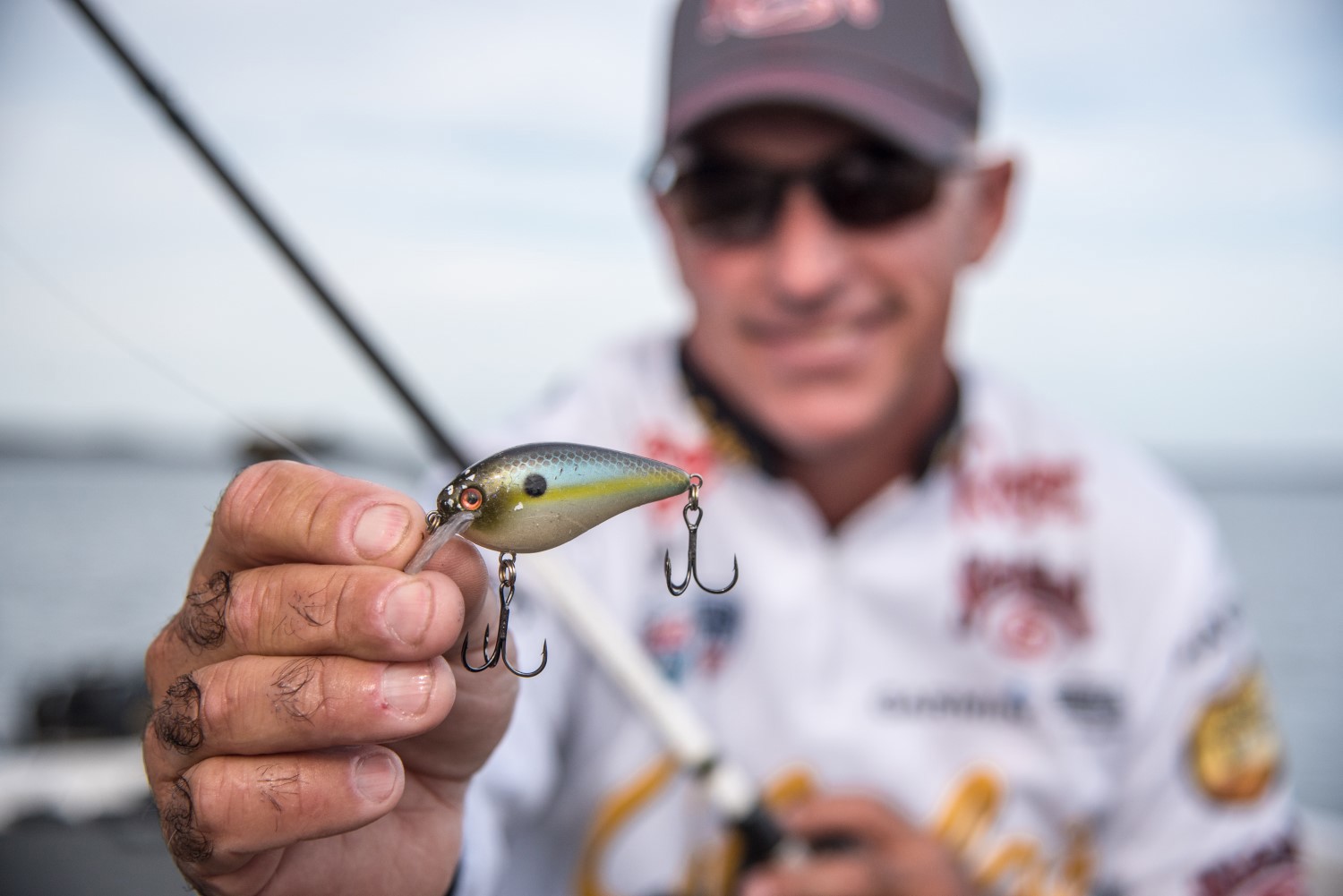By : Mark Hicks
Clark Wendlandt has an arsenal of lures that are specific to certain seasons and situations. However, he always has three lures tied on that are likely to catch bass whenever and wherever he happens to be fishing.

It would be impossible to list the best lures and lure colors to use in every season and bass fishing situation. The possibilities are infinite. You can simplify things by doing as 2020 Bassmaster Elite Series Angler of the Year Clark Wendlandt does.
Wendlandt throws the KVD 1.5 squarebill in muddy to clear water, in cold to warm water, and he targets wood, rock and grass cover with it. The KVD 1.5 easily bounces off cover without snagging, which is typically when a bass pounces on this proven crankbait.
“The greatest thing about the KVD 1.5 is that it deflects left and right when you’re reeling rapidly,” Wendlandt said. “It doesn’t have to hit anything to trigger a reflex strike.”
The KVD 1.5 comes in myriad colors that match a wide variety of bass forage. In the spring Wendlandt opts for crawfish patterns that have red in them. During the prespawn phase, he fishes these red-hued squarebills wherever bass may be staging just prior to spawning. This includes rock and riprap shorelines, wood cover and submerged grass.
“That same strategy works well after the bass spawn, too,” Wendlandt said. “But it is not the best way to go when the bass are actually spawning.”
In summertime, Wendlandt fishes the 1.5 in shad and bluegill patterns. He often runs it in shallow water early in the morning before heading offshore to fish deep with other baits.
“In the fall I’m going to start with a KVD 1.5 in a shad pattern in the backs of creeks,” Wendlandt said. “Bass just about everywhere are feeding on shad at that time of year.”
He looks for surface feeding activity and swarms of shad. Besides the backs of creeks, the shad and bass could be relating to sand or mud flats, rocky shorelines, windfalls on the edges of creek channel banks and submerged grass.
“When the KVD 1.5 hits grass, I clear the hooks with a hard snap of the rod tip,” Wendlandt said.
He serves up the 1.5 with a medium-heavy cranking rod matched with a high-speed reel and 16-pound fluorocarbon line.
“The great thing about the Sexy Dawg is that you can walk it really fast to really slow, depending on the mood of the bass,” Wendlandt said. “I start with medium cadence. A steady walking actionis usually the way to go.”
His basic colors for the Sexy Dawg include Sexy Shad, Natural Shad and Sexy Chartreuse Shad.
“I don’t start fishing the Sexy Dawg in the spring until the water warms to the mid-50s,” Wendlandt said. “I keep it moving and work it around shallow cover. I’m looking for aggressive fish.”
In the summer, Wendlandt often downsizes from the 4.5-inch Sexy Dawg to the 3.75-inch Sexy Dawg Jr. because smaller young-of-year baitfish are beginning to show up.
“A lot of the bass are deep in the summertime, but I almost always start out the first hour and a half of the day fishing shadows with the Sexy Dawg,” Wendlandt said.
In autumn Wendlandt is all about the Sexy Dawg Jr. due to the preponderance of young-of-year shad and other baitfish. He looks for schooling activity in the backs of creeks and large balls of baitfish with his electronics.
“I use a 6-foot, 9-inch, medium action rod for walking a Sexy Dawg,” Wendlandt said.“ A longer, bulkier rod will wear you out. A 30-or 40-pound test braided line makes walking the dog easier, too.”
The bulky 4-inch Game Hawg tempts bites with lively legs and flappers, and its coffee scent masks human odors which keep the bass holding on.
“I throw the Game Hawg a lot,” Wendlandt said. “For me, there’s really two presentations. One of them is flipping it Texas rigged in the spring and fall.”
He typically rigs the Game Hawg for flipping with a stout, straight shank flipping hook and a 1/4-or 5/16-ounce Tour Grade Tungsten Weight. His go-to colors are Green Pumpkin, Black Blue Flake and BlueCraw.
In summertime the Game Hawg becomes Wendlandt’s primary Carolina rig bait for fishing ledges and other offshore structure and cover. He rigs the bait Texas stye with a 3/0 or 4/0 offset wide gap hook and uses a 1/2-to 1-ounce Tour Grade Tungsten Carolina Rig Sinker. A swivel connects a 3 1/2-foot leader of 16-pound fluorocarbon to his 20-pound fluorocarbon main line.
“I almost always drag a Carolina rig over the bottom,” Wendlandt said. “With a tungsten sinker you can tell if the bottom is mussels, little rocks big rocks, brush or grass. That really helps.”